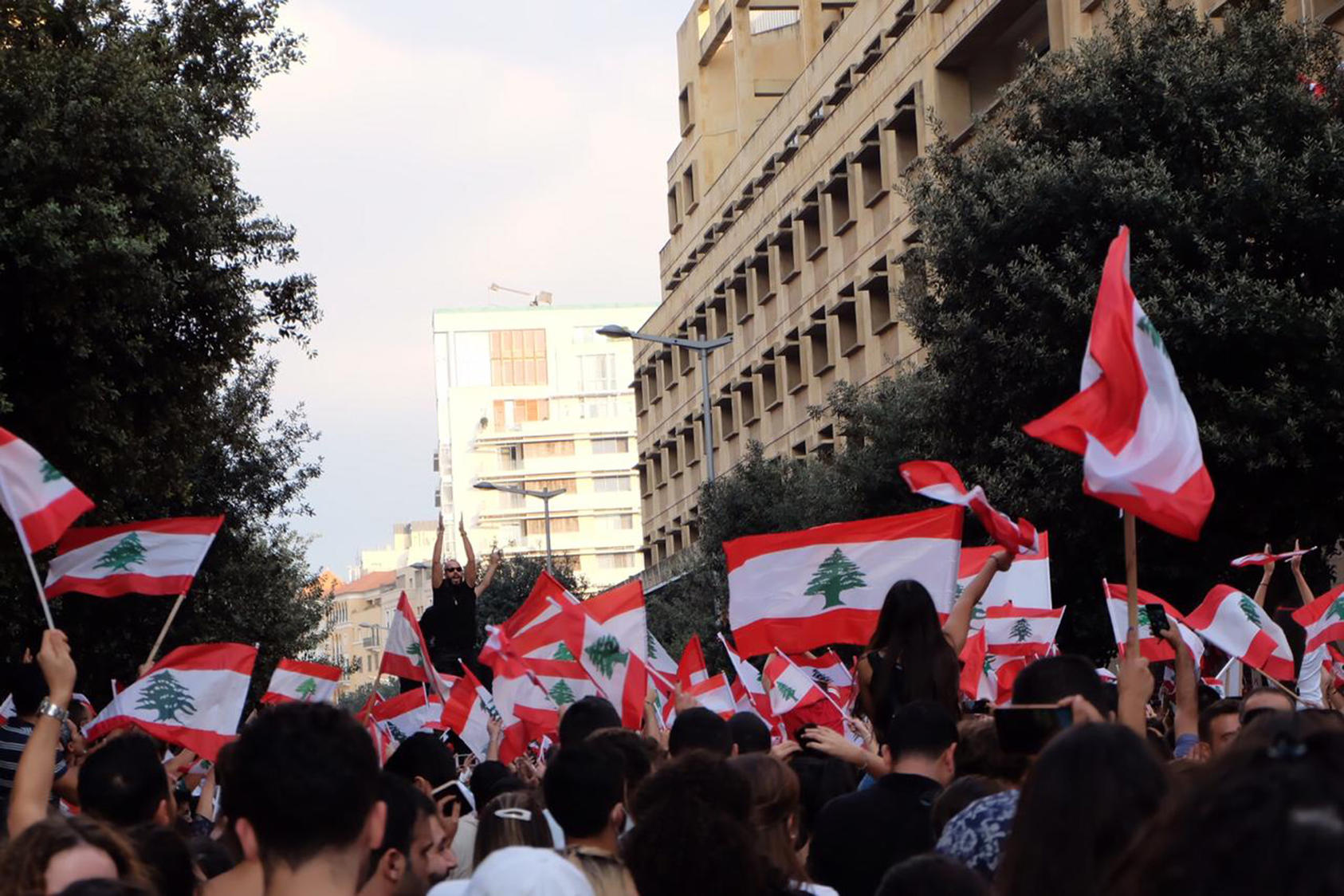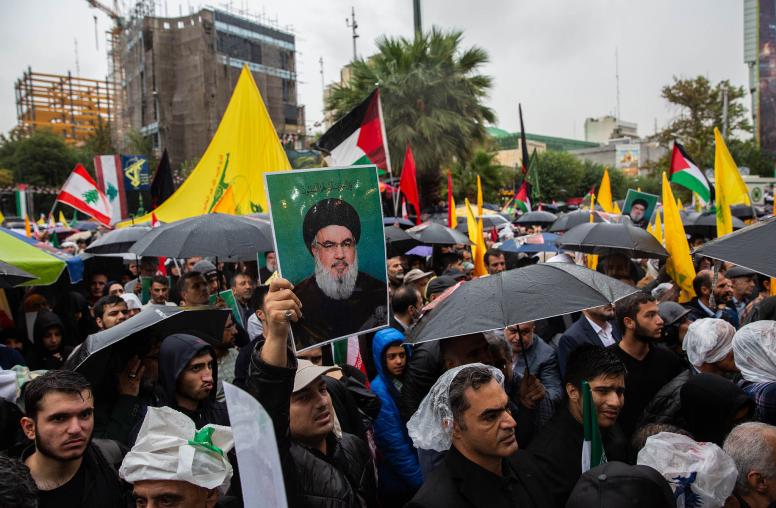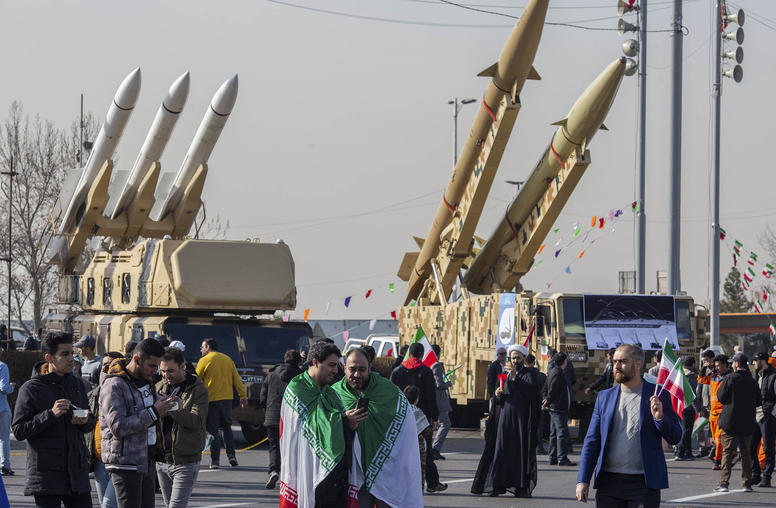A massive protest movement emerges in Lebanon. What does it mean?
Lebanon has seen its biggest protest in years. But it remains to be seen if anyone is ready for real reform.
Over the last week, mass protests broke out across Lebanon, signaling citizens' mounting discontent with their government and economy. Millions of Lebanese of all backgrounds, including Sunnis, Shiites, Christians and Druze from across the socio-economic spectrum hit the streets to express their exasperation with the country’s endemic corruption. Although not a cohered uniform movement, protesters have several commons core demands, including the resignation of the current cabinet; a new government composed of technocrats who would usher in political, economic, and administrative reforms; and the lifting of taxes on poor communities. The government announced on Monday emergency economic reforms in an effort to assuage protesters. Will it be enough? USIP’s Elie Abouaoun takes a closer look at what sparked the protests, the impact on Lebanon’s highly polarized politics, and possible scenarios for the next few weeks.

What is behind the spate of large-scale protests in Lebanon?
Well, the direct trigger was a recent decision by the government to impose taxes on all voice over internet protocol applications, like WhatsApp. However, this is just the straw that broke the camel's back. Over the last two years, many of Lebanon’s economic and social equities were fading away. After a boom in the real estate sector between 2008 and 2015, a 2017 recession has weighed heavily on the economy, including a recent rise in interest rates and a suspension of the subsidized housing loans provided through the state-run Public Corporation for Housing. This has affected the wider economy and caused a spike in inflation.
This has been compounded in the last few months by a steady decrease in the foreign reserves of the Central Bank, hindering its ability to counter increasing speculation on the national currency. For the first time since 1992, the fixed exchange rate of the Lebanese pound (LBP) against the U.S. dollar (USD) rose from 1507 LBP to 1 USD to 1,600-1,700 per dollar, reviving a dormant black market of forex dealers. Despite the Lebanese banking sector’s solid reputation, the banks started to restrict access to U.S. greenbacks. Many experts attribute the decrease in the availability of foreign reserves to reasons ranging from the U.S. sanctions on Hezbollah and the Syrian regime—resulting in many essential commodities for Syria being bought through Lebanese banks—as well as the declining remittances of the Lebanese expatriates.
Other issues driving the protests include rampant corruption and ineffective governance, including by parties who overpromised the population that they would engage in an ambitious reform program in the lead up to the 2018 legislative elections and have failed to do so. Further, the explosive mix of economic hardship and underperforming political parties, combined to create an untenable situation. It can only be resolved by political leaders willing to take painful decisions, and we haven’t seen the political will for that so far. Instead, successive governments have periodically resorted to adding new consumption taxes that disproportionately hit the middle and lowest classes.
How is this affecting the already highly polarized political landscape?
The main actors in the current protests are political parties and some civil society organizations, with the notable absence of the already illegitimate labor unions, who are seen as corrupt and coopted. Large parties such as the Shiite dominated Amal movement (led by Speaker of Parliament Nabih Berri), the Druze-dominated socialist party (led by Walid Joumblatt) and the Christian Lebanese Forces (led by Samir Geagea) were the most visible in calling for street protests last week. They have long-standing political accounts to settle with the President Michel Aoun and his Free Patriotic Movement led by Gebran Bassil. Both Joumblatt and Berri count among the most corrupt politicians in Lebanon. Therefore, there is no question that their parties, and other smaller parties with grievances against Aoun, are fueling the protest movement and trying to hijack it for their own gain.
On another hand, the already weakened Prime Minister Saad Hariri is also being targeted by his Sunni competitors and some of his former allies—such as Joumblatt and Geagea—who accuse him of being too accommodating with Hezbollah. What happened to me last Friday shows the extent to which the protest movement has been coopted by some political parties. I was in Beirut and was stuck on my way to the airport. I had to go through eight roadblocks, all of them controlled by the Amal movement. My cab driver was from Amal and had to show his membership card to get through the blocks. All protesters were chanting against Aoun while praising Berri with rare mentions of poverty or dignity.
Even though there are spontaneous and genuine protest groups with legitimate demands, the fact is that these groups—for many reasons—cannot be game changers by themselves. Not only they are not organized, but none of them has a vision or a realistic framework for practical solutions. Protesting alone is never enough. Even when ideas emerge from the protests, they often prove to be unrealistic or irrelevant to the Lebanese context. Another flaw is that most of the civil society activists in Lebanon—where sub-national identity is widely seen as protective and most important—put forward an absurd conditionality between secularism and reform.
Last but not least is the fact that the collective public will to engage in serious reforms remains rhetorical. The level of resistance to real changes is too high among the population. Anecdotally, some protesters were offering to transport passengers to the airport for money and these offers were made in front of the protest leaders at roadblocks. A good description of the situation is that despite the certainty that the system is corrupt, not everyone who is against the system is clean or ready to start by themselves.
What are the possible scenarios for the next few weeks?
Given the diversity of actors involved in these protests and their often-contradicting agendas, it is hard to predict the direction that events will take. Three major political formations (President Aoun and his party, Prime Minister Hariri and his party, and Hezbollah) know that a collapse is not in their best interest and that any new-power sharing agreement will not give them as much as they have now. I believe they will try to accommodate some of the demands by resorting to cosmetic or unrealistic measures—as the ones voted on Monday—without agreeing to a radical change in the political system. Joumblatt, Geagea and Berri are, on the contrary, keen on going far with their movement but will have to limit their ambitions by regional considerations and alliances (e.g., Iran’s alliance with Hezbollah, Saudi Arabia’s support for Hariri, and Syria’s fear of a new government that is less friendly to the regime, among other factors).
A general collapse in Lebanon does not seem to be accepted or desired neither domestically nor internationally. But, the Lebanese state is ripe for collapse, though internal checks and balances and regional interests will likely prevent its fall. However, the level of popular anger is so high and some of the protest groups are not well organized and unpredictable. For all these reasons and because in such cases a minor incident can change the course of things, no one affords the luxury of providing a confident forecast. We must just wait and see.



